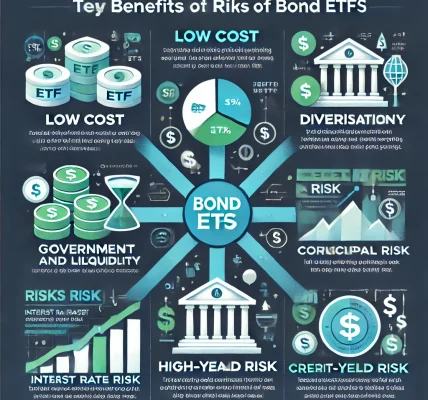Introduction Bond ratings play a crucial role in the financial market by helping investors assess the creditworthiness of bond issuers. These ratings, assigned by credit rating agencies, indicate the likelihood that a bond issuer will meet its debt obligations. Understanding how bond ratings work and their impact on risk and returns is essential for making informed investment decisions.
What Are Bond Ratings? Bond ratings are evaluations of a bond issuer’s credit quality and the likelihood of timely repayment of principal and interest. Major credit rating agencies, such as Moody’s, Standard & Poor’s (S&P), and Fitch Ratings, assign these ratings. Ratings are typically expressed in letter grades ranging from high-quality (e.g., AAA) to speculative or junk status (e.g., C or D).
Bond Rating Categories
- Investment-Grade Bonds: These bonds carry low risk and are rated BBB- or higher by S&P and Fitch, or Baa3 or higher by Moody’s. They are issued by financially stable entities, such as governments and large corporations.
- Non-Investment Grade (Junk) Bonds: These bonds are rated below BBB- by S&P and Fitch or below Baa3 by Moody’s. They carry a higher risk of default but offer higher potential returns to compensate for the increased risk.
How Bond Ratings Affect Risk
- Default Risk: Lower-rated bonds have a higher probability of default, meaning the issuer may fail to make interest payments or repay the principal.
- Interest Rate Sensitivity: Investment-grade bonds are generally less sensitive to interest rate changes compared to lower-rated bonds, which are more volatile.
- Market Perception: Downgrades in bond ratings can negatively impact investor confidence and lead to declining bond prices.
How Bond Ratings Affect Returns
- Yield Differences: Higher-rated bonds offer lower yields due to their lower risk, while lower-rated bonds must offer higher yields to attract investors.
- Capital Appreciation: Upgrades in bond ratings can lead to price increases, providing capital gains to bondholders.
- Liquidity: Investment-grade bonds are typically more liquid, meaning they can be bought and sold more easily compared to lower-rated bonds.
Conclusion Bond ratings are a key indicator of credit risk and play a significant role in shaping the risk-return profile of a bond investment. Investors should carefully consider bond ratings when building their portfolios, balancing their risk tolerance with the potential for returns. By understanding how bond ratings influence market behavior, investors can make better-informed decisions and navigate the complexities of the bond market effectively.




